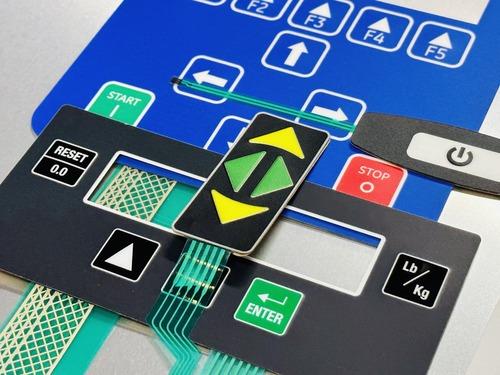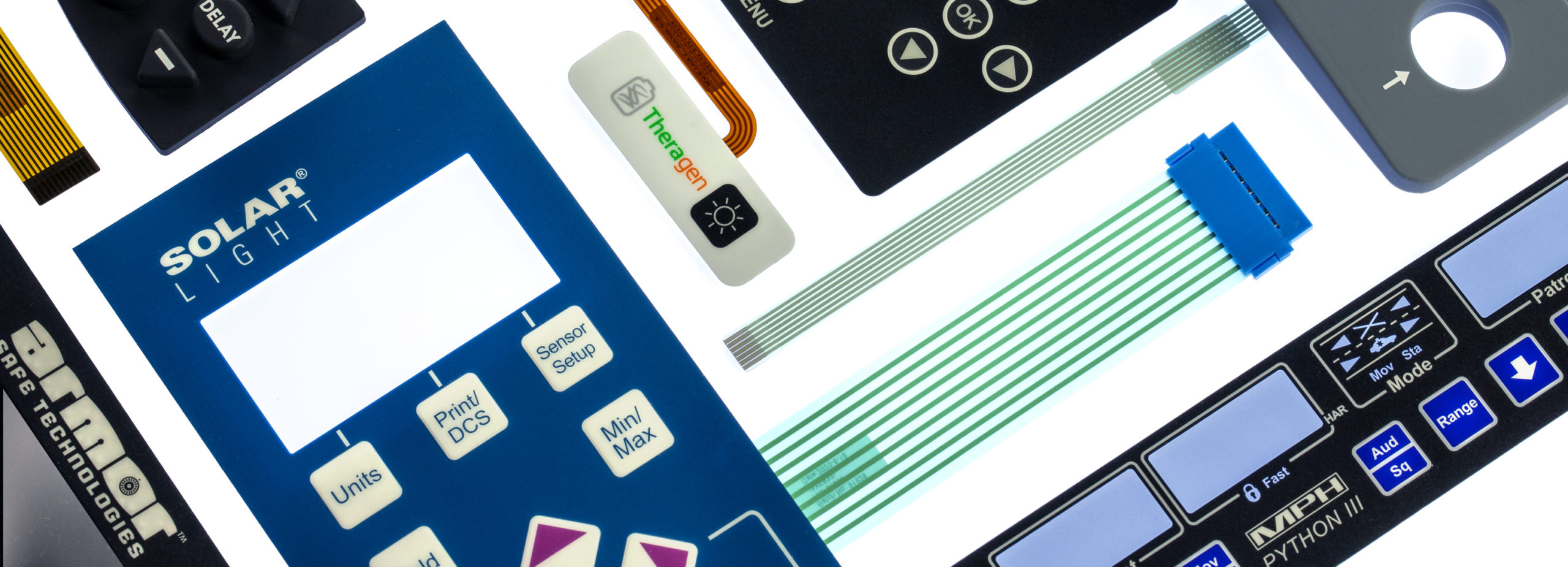Innovations in Membrane Switches for Touch-Sensitive Devices
Innovations in Membrane Switches for Touch-Sensitive Devices
Blog Article
Understanding the Importance of Membrane Switches in Interface
Membrane switches are essential components in the style of reliable customer interfaces, promoting not only functionality but likewise improving aesthetic appeal and customer interaction. Their one-of-a-kind features, such as resistance to environmental aspects and personalized designs, make them appropriate for a diverse variety of applications throughout numerous markets. As we check out the future patterns and numerous advantages connected with Membrane innovation, it ends up being clear that these switches are extra than simply elements; they represent a convergence of development and practicality. The implications of this modern technology on customer experience are worth analyzing even more.
What Are Membrane Buttons?

The spacer layer, which includes sticky residential or commercial properties, enables for the splitting up of the circuit layer from the overlay, guaranteeing that the switch remains in a non-activated state until pressed. When pressure is used to the overlay, it compresses the spacer layer, bridging the gap and finishing the circuit in the underlying layer. This layout not only decreases the physical area required for conventional mechanical buttons yet additionally enhances the longevity of the device, as Membrane buttons are usually immune to dust, dampness, and other environmental factors.
Typically discovered in applications ranging from customer electronic devices to clinical tools, Membrane switches are essential to contemporary innovation, giving a user-friendly and effective interface that lines up with modern layout requirements.
Benefits of Membrane Switches
While numerous switch modern technologies exist, Membrane Switches offer distinct advantages that make them particularly preferable in various applications. Among the primary advantages of Membrane switches is their portable layout, which enables space-saving executions in tools where real estate is restricted. Their slim account not only enhances visual allure yet likewise facilitates light-weight building.
An additional considerable advantage is their resistance to ecological elements. Membrane switches are normally sealed versus dampness, dirt, and pollutants, making them excellent for use popular settings, such as clinical devices and industrial tools. This resilience extends the life expectancy of the switch, decreasing maintenance prices and improving reliability.
Furthermore, Membrane buttons can be customized to meet details design requirements, including one-of-a-kind graphics and shades that enhance user communication. Their responsive comments alternatives can likewise be tailored to offer an enjoyable individual experience. Furthermore, Membrane buttons are cost-effective, specifically in high-volume applications, as they can be created effectively.
Applications in Different Industries

In the consumer electronics sector, Membrane switches prevail in gadgets such as microwaves, cleaning makers, and remote controls. Their tactile responses and aesthetic choices improve individual experience while giving a streamlined, modern-day appearance. In addition, auto manufacturers make use of Membrane buttons in control panel controls and infotainment systems, where room is restricted, and user involvement is essential.
In addition, the industrial market leverages Membrane switches in control panels for machinery and devices, allowing for instinctive operation in often severe settings. Their resistance to chemicals and moisture makes sure longevity and dependability in these applications. In general, the flexibility of Membrane Switches adds dramatically to their prevalent usage, making them essential in various technological domains.
Layout Considerations for Membrane Buttons

When creating Membrane switches, numerous crucial considerations need to be considered to guarantee optimum performance and user experience. The choice of materials is crucial; picking durable, top quality substratums can boost the switch's long life and resistance to ecological aspects such as moisture and temperature level changes.
Secondly, the layout of the graphic overlay need to focus on clarity and convenience of usage. Icons and message should be clear, and the layout must help with instinctive interaction (membrane switches). In addition, responsive responses is essential; including a tactile dome or other systems can boost the user experience by offering physical verification of activation
An additional essential variable is the switch's electrical performance. Designers should make certain that the conductive traces are appropriately created to decrease resistance and prevent signal disturbance. This involves assessing the called for actuation pressure and ensuring compatibility with the digital parts they will interface with.

Future Patterns in Membrane Modern Technology
As innovation remains to development, Membrane switches are website here positioned to develop considerably, driven by innovations in materials and making strategies. One arising trend is the unification of innovative materials, such as flexible substrates and conductive inks, which improve durability and lower the total weight of Membrane buttons. These materials not only improve the tactile response but additionally enable the style of buttons that can stand up to harsher environmental conditions.
Additionally, the integration of touch-sensitive technologies is changing standard Membrane Switches right into even more interactive customer interfaces. Capacitive touch sensors embedded within Membrane switch panels can offer a much more user-friendly and receptive user experience, aligning with the expanding demand for smooth, contemporary styles in customer electronic devices.
Additionally, innovations in printing strategies, such as electronic and 3D printing, allow fast prototyping and personalization of Membrane buttons. This versatility allows suppliers to react much more rapidly to market needs and consumer choices.
Finally, sustainability is coming to click resources be a considerable focus, with suppliers exploring environmentally friendly materials and processes. As these fads unravel, the future of Membrane technology assures improved capability, visual charm, and ecological obligation, solidifying their duty in sophisticated customer interfaces across different markets.
Final Thought
In verdict, Membrane Switches represent a crucial part in the design of customer interfaces, incorporating performance with visual flexibility. As innovations in technology continue, the development of Membrane switches is expected to additional improve customer interfaces, driving innovation and improving usability in a progressively complex technical landscape.
Membrane switches are indispensable elements in the style of effective customer interfaces, promoting not only capability however likewise enhancing visual charm and user communication.Membrane Switches serve as a crucial component in different individual interfaces, promoting a smooth interaction in between individuals and digital gadgets.While countless button innovations exist, Membrane Switches offer distinct advantages that make them particularly preferable in various applications.In addition, Membrane switches can be customized to meet specific design demands, including distinct graphics and colors that improve individual interaction.In conclusion, Membrane Switches represent a vital part in the design of individual read this post here interfaces, integrating performance with visual adaptability.
Report this page